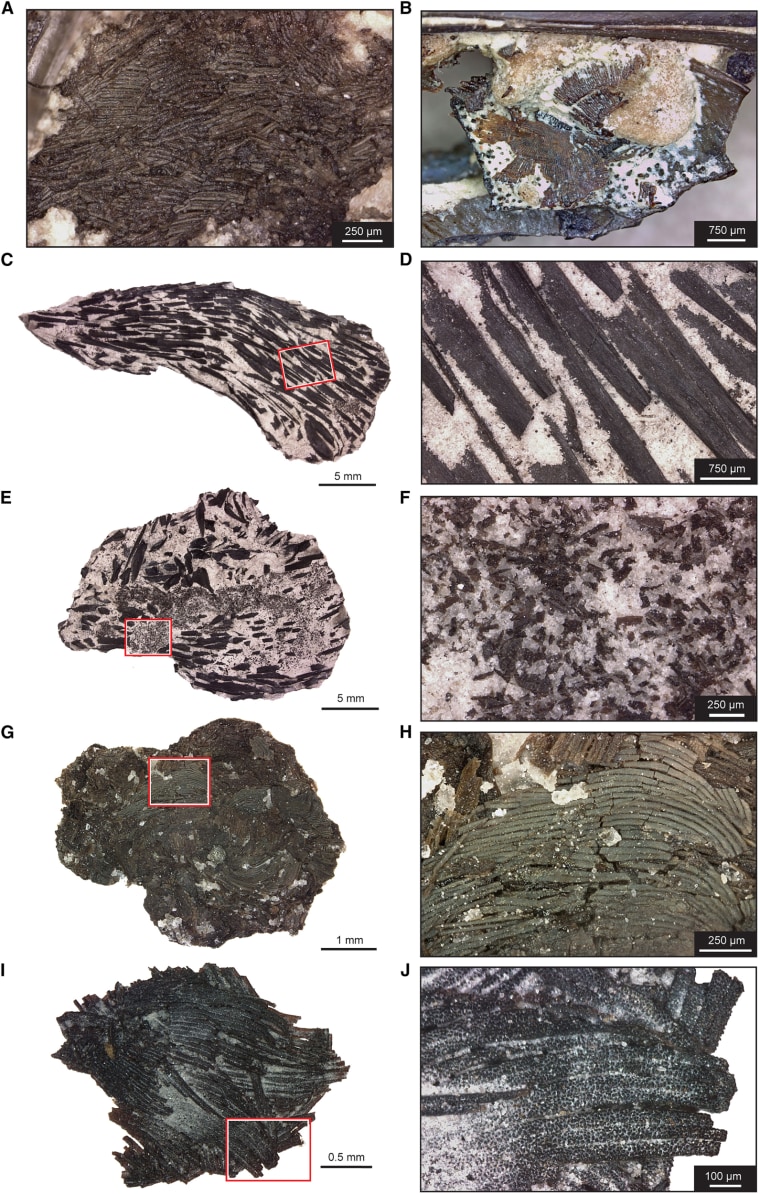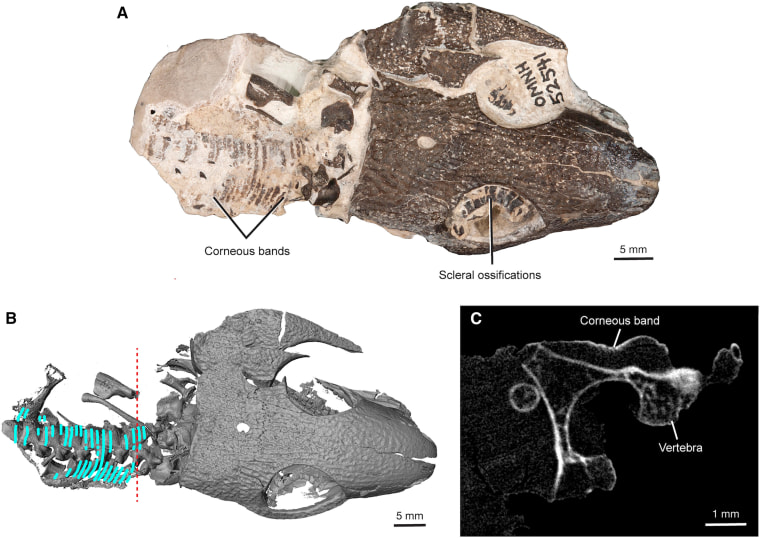Researchers have discovered a fossilized skin they say is the oldest on record.
The crocodile-like skin, which is at least 286 million years old, was preserved in an ancient, infilled cave in present-day Oklahoma. The find could help unlock evolutionary mysteries and is an important clue from a time when some animals were transitioning to life on land.
“Finding such an old skin fossil is an exceptional opportunity to peer into the past and see what the skin of some of these earliest animals may have looked like,” Ethan Mooney, a graduate student at the University of Toronto and a lead author of the paper, said in a news release.
The discovery, which was published Thursday in the scientific journal Current Biology, was made at a quarry and cave system called Richards Spur. The researchers think animals fell into the cave system and were preserved by oil and tar that seeped in, encasing them.
The skin is a 3-dimensional cast with some fossilized tissue attached.
“There are very, very few cases of Paleozoic land animals that have skin preserved,” said Paul Olsen, a paleontologist and professor at Columbia University who was not involved in the paper. “That’s one of the reasons this is so important.”

The preserved skin was found at a site with many fossils of lizardlike creatures called Captorhinus aguti, but it wasn’t clearly associated with a particular skeleton.
Olsen said the skin could help solve mysteries about how reptiles and mammals split from one another in evolutionary history. The two branches of life share a common ancestor.
“They hypothesize that reptilelike skin was present in the common ancestor of reptiles and mammals, but they can’t actually show that with the material they have because their reptilelike skin is not associated with a skeleton,” Olsen said of the authors. “The site could reveal that in the future.”



